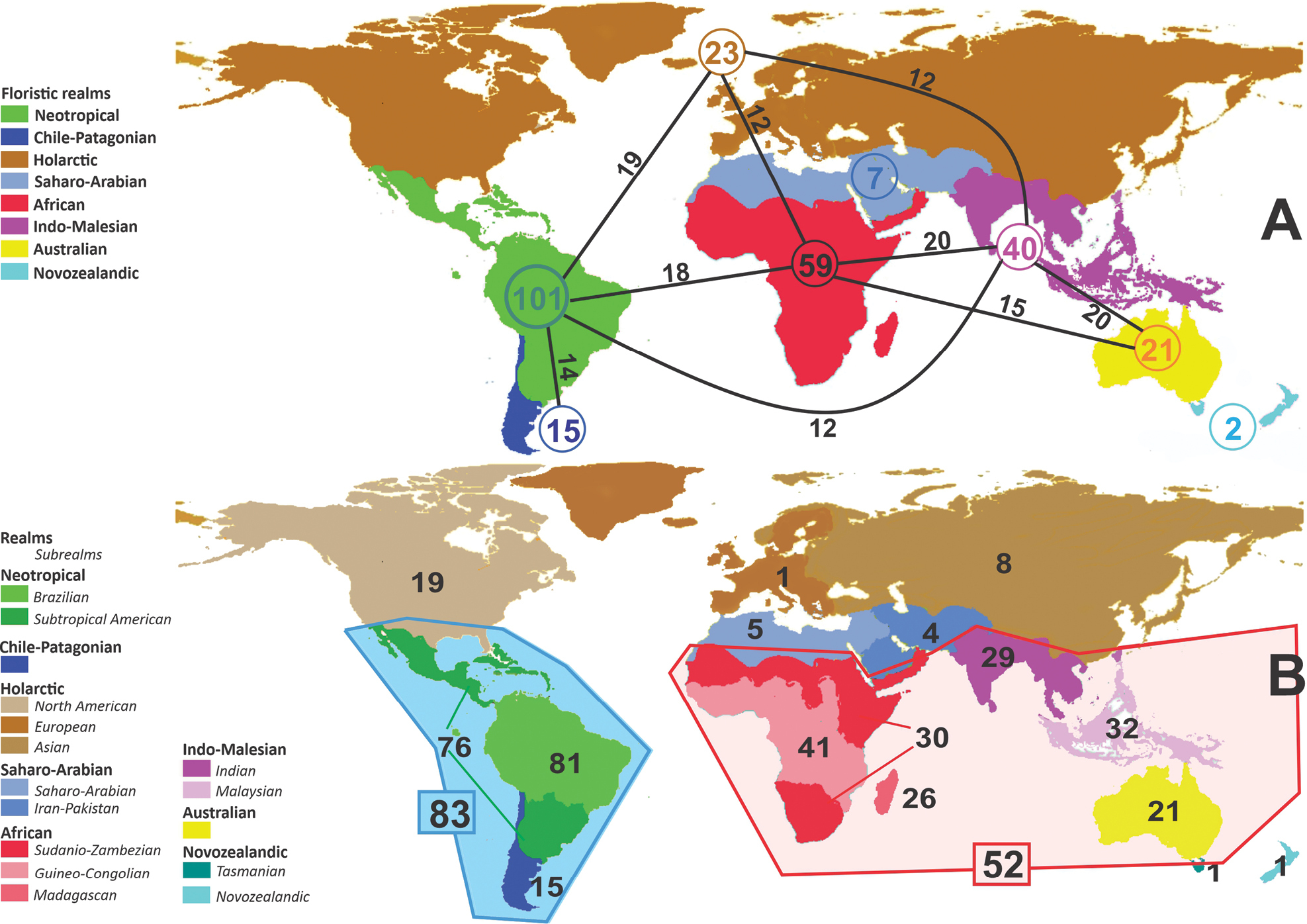
|
||
|
A Caesalpinioideae genus richness across floristic realms (according to Liu et al. 2023). The numbers within the circles represent the total number of genera in each realm. The numbers on the lines represent the number of genera shared between two realms (> 10 genera) B Number of Casalpinioideae genera in the floristic subrealms (sensu Liu et al. 2023). The numbers associated with the two polygons indicate the number of genera restricted to the two major blocks of tropical and subtropical areas in the New World and the Old World (maps modified from Liu et al. 2023, CC BY 4.0). |